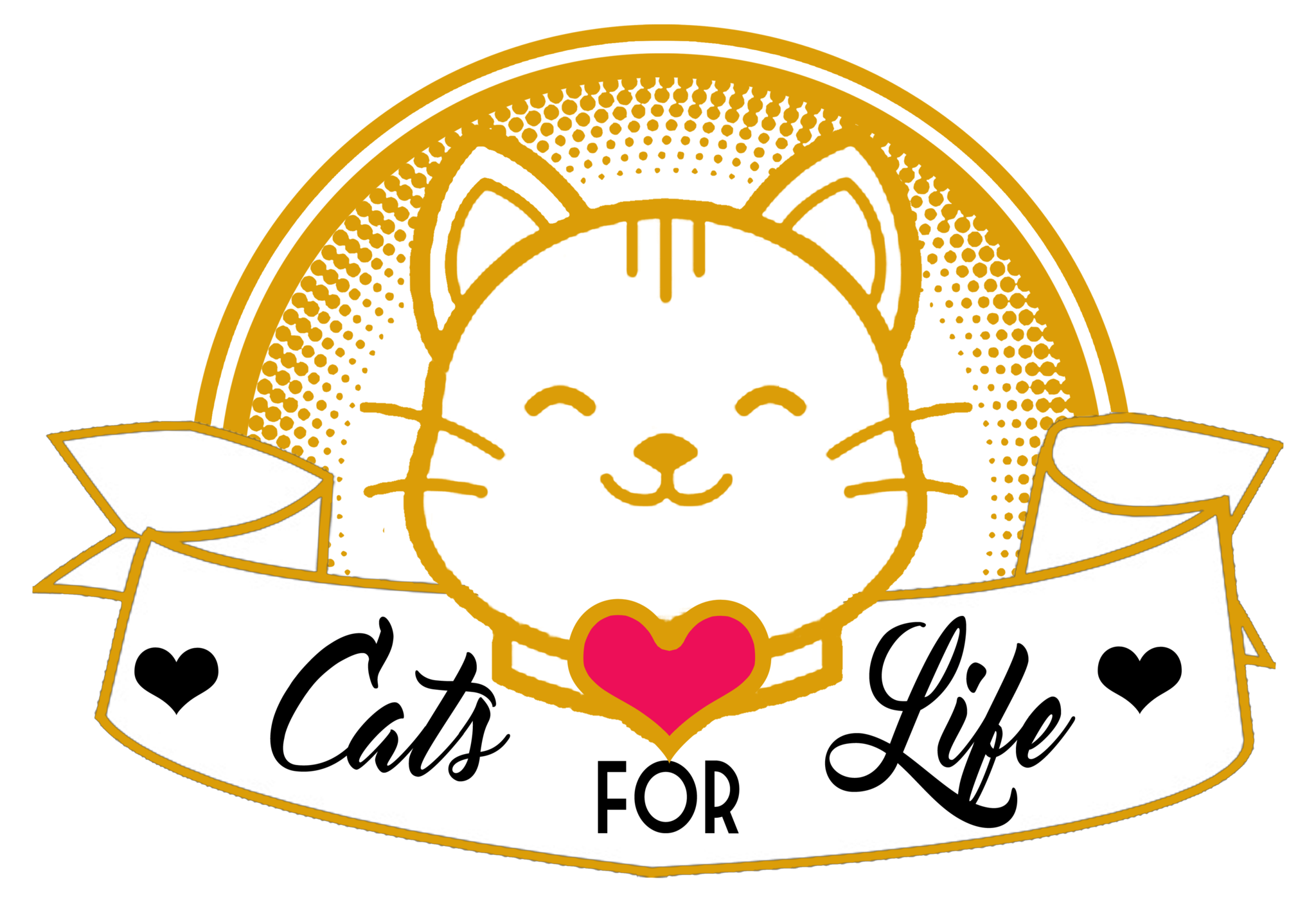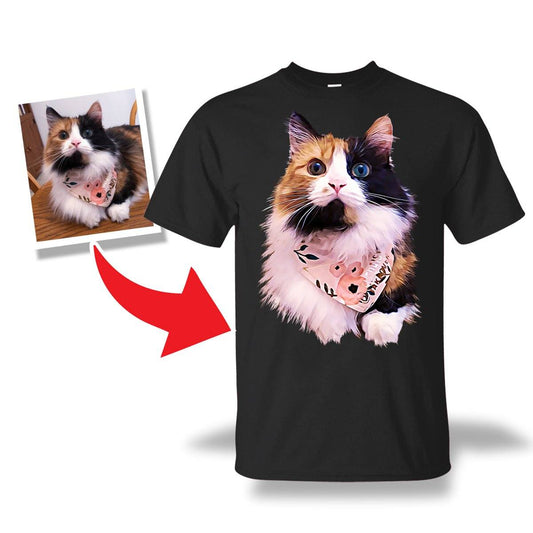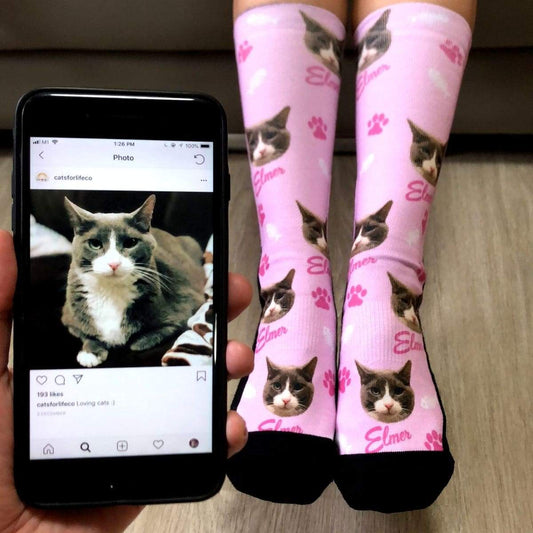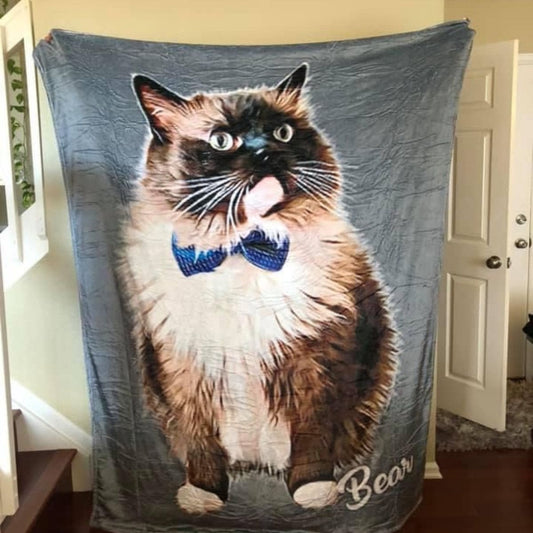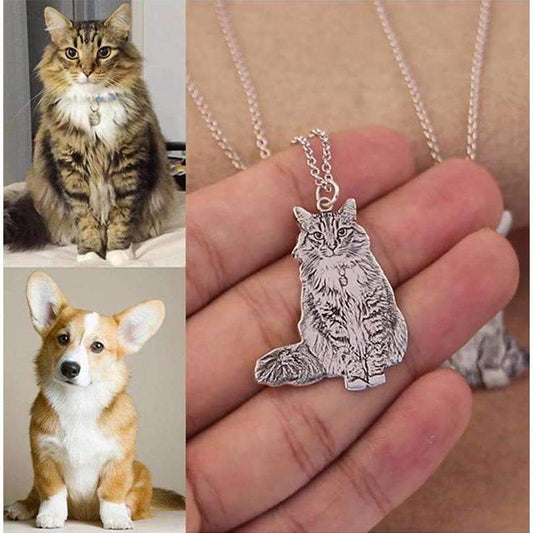Creating catnip toys at home is a fun and rewarding activity that can provide endless entertainment for your feline friend. Not only does it allow you to tailor the toy to your cat's preferences, but it also gives you the opportunity to ensure the safety and quality of the materials used. In this article, we'll explore the essentials of making your own catnip toys, from understanding catnip and its effects to engaging your cat with the newly crafted playthings.
Key Takeaways
- Understanding the allure of catnip and its safe usage is crucial before creating catnip toys for your cats.
- Selecting the right fabric and quality catnip, along with gathering necessary additional supplies, is essential for making durable and appealing toys.
- Designing toys with simple sewing patterns, creative shapes, textures, and incorporating elements like crinkle material and bells can significantly enhance your cat's play experience.
- Following step-by-step instructions for assembling the toys will help ensure their durability and safety, while also providing tips for proper stuffing and sealing.
- Once the toys are made, introducing them to your cat and engaging in interactive playtime is important for stimulation, and regular cleaning and maintenance will prolong the life of the toys.
Understanding Catnip and Its Effects on Cats

What is Catnip?
Catnip is a fascinating herb from the mint family, cherished by felines for the unique behavioral reactions it induces. When exposed to catnip, cats may exhibit behaviors such as rolling, flipping, and rubbing. This is due to a compound in catnip called nepetalactone, which can trigger a euphoric state in cats. Interestingly, not all cats are affected by catnip; sensitivity to it is hereditary, with about two-thirds of cats being responsive.
While catnip is generally safe, it's important to use it responsibly. Overexposure can cause mild digestive upsets or make your cat overly excited. It's also worth noting that catnip's effects are usually temporary, lasting about 10 to 15 minutes. After this period, cats typically lose interest and won't respond to catnip again for a while.
Catnip also contains dietary fiber that aids in gastrointestinal motility, helping to eliminate hairballs and improve digestion.
For those concerned about allergies, managing cat allergens at home is crucial. Catnip toys can be part of a strategy that includes improving air quality and grooming. Understanding allergens like Fel d 1 is key to creating a comfortable environment for both you and your feline friend.
Why Do Cats Love Catnip?
Cats exhibit a wide range of behaviors when exposed to catnip, and these reactions are due to the active compound in catnip called nepetalactone. This substance is found in the leaves and stems of the plant and can trigger behaviors that are typically associated with feline happiness and playfulness.
Cats' affinity for catnip is believed to be inherited, with some cats showing more sensitivity to its effects than others. The response to catnip is hereditary, and it's estimated that between 50% to 70% of cats are affected by it. Cats that do react to catnip may roll around, flip over, and exhibit an overall increase in activity.
- Relaxation: Some cats may become more mellow and show signs of contentment.
- Affection: Catnip can cause cats to be more loving towards their owners, rubbing against them and purring.
- Playfulness: Many cats will play more vigorously, chasing imaginary prey or their own tails.
While the majority of cats enjoy the stimulating effects of catnip, it's important to observe your cat's behavior and ensure they are enjoying the experience.
Safety Considerations for Catnip Use
While catnip is generally safe for cats, it's important to use it responsibly to ensure your pet's well-being. Not all cats are affected by catnip, and for those that are, the reaction can vary. Typically, cats will not overdose on catnip, as they tend to self-regulate and lose interest after a few minutes of exposure. However, there are a few safety considerations to keep in mind when introducing catnip to your feline friend.
- Monitor your cat's reaction to catnip, especially the first time.
- Use catnip in moderation to prevent overstimulation.
- Ensure that catnip toys are free from small parts that could be ingested.
- Consider your cat's age, as kittens under 6-8 months may not respond to catnip.
When creating catnip toys, it's essential to choose materials and designs that prioritize your cat's safety. Avoid using any toxic adhesives or materials that could cause harm if chewed or swallowed. Remember, the goal is to provide a fun and safe play experience for your cat.
Always keep in mind the individual personality and preferences of your cat. Some may prefer a cozy retreat or a different type of stimulation. Utilize your love and creativity to create accessories and toys that cater to your cat's unique character.
Gathering Materials for Homemade Catnip Toys

Choosing the Right Fabric
When selecting fabric for your homemade catnip toys, consider both the safety and enjoyment of your feline friend. Choose materials that are durable and non-toxic, ensuring they can withstand the enthusiastic play of your cat. Fabrics such as cotton, fleece, or a wool blend felt are excellent choices as they are soft yet strong, and less likely to fray or release threads that could be ingested.
For a simple DIY project, you can repurpose old T-shirts. They are a fantastic resource as they're often readily available and can be cut into strips for knotting or sewing. Here's a quick guide to get you started:
- Deconstruct the T-shirts by cutting along the side seams and removing sleeves and neck.
- Cut the fabric into rectangles or strips, depending on the toy design.
- Stretch each strip slightly to encourage curling, which adds durability.
Remember, the key is to create a toy that is safe and engaging. The right fabric not only stands up to your cat's claws and teeth but also provides a comforting texture for them to cuddle with.
For more intricate toys, consider using a Cricut maker to cut precise shapes or adding embroidery for a personal touch. Always ensure that any added decorations are securely attached to prevent accidental ingestion.
Selecting Quality Catnip
When it comes to creating catnip toys that will truly captivate your feline friend, selecting high-quality catnip is crucial. Look for fresh, organic catnip that is free from pesticides and additives to ensure the safety and health of your cat. The potency of catnip is determined by the concentration of the essential oil nepetalactone, which is what triggers the response in cats.
- Freshness: Choose catnip that looks green and vibrant, not brown or stale.
- Origin: Preferably select catnip grown in regions known for high-quality herbs.
- Packaging: Airtight containers or bags will help preserve the potency.
When purchasing catnip, consider the form it comes in. Loose leaves and flowers offer a more intense experience, while pellets or sprays may be less potent but can still be effective. Remember, a little goes a long way, so use sparingly to maintain your cat's interest over time.
Additional Supplies You'll Need
Once you've selected the perfect fabric and catnip, you'll need a few more items to complete your homemade catnip toys. Scissors, thread, and needles are essential for cutting and sewing your designs. A sewing machine can be a great asset if you're planning to make multiple toys or prefer a more polished look.
For those who want to add a bit of pizzazz to their creations, consider ribbons, feathers, or small pompoms. These can be sewn securely onto the toys to provide an extra element of fun for your feline friend. Remember, safety is paramount, so ensure all additional decorations are firmly attached to prevent any choking hazards.
While creating catnip toys, it's also important to create a cat-friendly home environment. This includes setting up litter boxes, providing scratching posts, and ensuring environmental enrichment to meet your cat's basic needs like feeding and sleeping areas.
Finally, a storage container or a resealable bag will be useful to keep the catnip fresh and the finished toys clean and ready for playtime.
Designing Your Catnip Toys

Simple Sewing Patterns for Beginners
Starting your journey into making catnip toys can be both exciting and a bit daunting. However, with simple sewing patterns, even beginners can create delightful toys for their feline friends. Choose patterns that require basic stitches and minimal pieces to ensure a smooth crafting experience.
- Measure your cat to determine the appropriate size for the toy.
- Customize the pattern to add a personal touch.
- Select a suitable fabric that is durable and safe for cats.
- Sew the pieces together with care, taking time to reinforce seams.
- Ensure the toy is a perfect fit for your cat, considering both size and play preferences.
Remember, the goal is to create a toy that is both fun for your cat and easy for you to make. Start with straightforward designs and as you gain confidence, you can explore more complex patterns.
Creative Shapes and Textures Cats Adore
Cats are naturally curious creatures, and their toys should stimulate that curiosity with a variety of shapes and textures. Incorporating different materials can significantly enhance your cat's playtime experience. For instance, a simple change from a smooth to a ribbed surface can keep your cat engaged for longer periods.
When designing catnip toys, consider the following textures that cats often find appealing:
- Soft fleece or plush for comfort
- Burlap or sisal for scratching
- Crinkly materials like Mylar for sound
- Ribbed or corrugated surfaces for tactile exploration
It's also important to think about the shape of the toy. Cats love to chase and pounce, so toys that mimic the movement of prey, such as mice or birds, can be particularly enticing. Here's a quick guide to some popular toy shapes:
Mice and fish shapes are classic and often involve a soft, plush exterior. Balls and round shapes encourage rolling and chasing. Irregular shapes can create unpredictable movements that intrigue cats.
Remember, the key is to keep your cat's interest piqued with a variety of options. Feel free to experiment with different combinations of shapes and textures to discover what your feline friend enjoys the most.
Incorporating Crinkle Material and Bells
Adding crinkle material and bells to your catnip toys can greatly enhance your cat's play experience. The sounds and textures stimulate their natural hunting instincts, making the toys irresistible.
- Choose crinkle material that is safe for pets, such as Mylar or specially designed pet-safe plastics.
- Bells can be sewn securely within the toy or attached to the outside, but ensure they are firmly fixed to prevent any choking hazard.
When selecting bells, consider the noise level. You want to engage your cat without causing a disturbance.
Remember to regularly check the toys for any signs of wear and tear, especially if your cat is particularly vigorous with their play. Safety should always be your top priority.
Assembling Your Catnip Toys

Step-by-Step Sewing Instructions
Once you have your materials ready and a pattern in mind, it's time to start sewing your catnip toy. Begin by threading your needle and tying a knot at the end of the thread. This will prevent the thread from slipping through the fabric as you sew.
- Cut out the fabric according to your pattern.
- Place the right sides of the fabric together and start sewing around the edges, leaving a small opening.
- Turn the toy right side out through the opening.
- Fill the toy with catnip, making sure not to overstuff.
- Sew the opening closed to secure the catnip inside.
Remember, the stitches should be tight and close together to prevent any catnip from spilling out and to ensure that the toy is safe for your cat to play with. Regularly check the toy for any signs of wear and tear, and replace it when necessary to keep your cat safe.
Ensuring Durability and Safety
When creating catnip toys, ensuring their durability and safety is paramount. Cats are known for their vigorous play, so selecting materials that can withstand sharp claws and teeth is essential. Look for fabrics that are both sturdy and washable, and avoid any that may fray easily or contain harmful dyes.
To prevent any choking hazards, all small parts such as bells or crinkle material should be securely attached. It's also advisable to perform a 'pull test' on these components before giving the toy to your cat. If you're using polyfill, spread it evenly to avoid lumps that could be chewed off and ingested.
Remember, the longevity of a toy not only provides ongoing enjoyment for your cat but also offers better value for your investment.
Lastly, consider the size of the toy. It should be large enough to prevent accidental swallowing but small enough for your cat to handle comfortably. Regular inspection of the toys for signs of wear and tear can prevent potential safety issues.
Tips for Stuffing and Sealing Your Toys
Once you've stitched your catnip toy together, it's time to add the final touches that make it irresistible to your feline friend. Proper stuffing and sealing are crucial to ensure the toy is safe and durable. Here's a quick guide to help you finish your homemade catnip toy:
- Begin by stuffing the toy with catnip. Use a funnel or a spoon to fill the toy evenly, but avoid overstuffing as this can make the toy less appealing.
- Add a pinch of polyester fiberfill for a softer texture, if desired.
- To seal the toy, use a ladder stitch or a whip stitch for a clean finish. Make sure there are no loose threads or openings that could allow the catnip to spill out.
- Give the toy a gentle squeeze to distribute the catnip and fiberfill evenly throughout.
Remember, the goal is to create a toy that will stand up to your cat's enthusiastic play. Double-check all seams and ensure the toy is securely sealed before introducing it to your pet to play with.
Finally, consider adding a personal touch to the toy. Whether it's a special shape that you know your cat loves or incorporating your cat's name into the design, a personalized cat toy can be a cherished keepsake for both you and your pet.
Engaging Your Cat with the New Toys

Introducing Catnip Toys to Your Cat
Once you've crafted the perfect catnip toy, it's time to introduce it to your feline friend. Start by allowing your cat to sniff and explore the toy at their own pace. Cats are naturally curious and will often approach new objects with caution. Place the toy in an area where your cat frequents, and let them discover it on their own terms.
Cats have individual preferences, and not all may react to catnip in the same way. Observe your cat's reaction to the toy. If they seem disinterested, try gently rolling or tossing the toy to spark their interest. Remember, the goal is to make the toy enticing and fun!
When introducing new toys, patience is key. Give your cat time to get accustomed to the scent and texture of the toy. Some cats may be immediately drawn to it, while others may take a few encounters to fully engage.
If your cat is hesitant, you can encourage play by engaging in interactive activities. Use a string to drag the toy, or hide it under a blanket to mimic prey movements. This can tap into your cat's hunting instincts and make the toy more appealing. Keep sessions short and positive, gradually increasing the time as your cat becomes more interested.
Interactive Playtime Ideas
After introducing your homemade catnip toys to your feline friend, it's time to engage them in interactive play. Cats thrive on the mental stimulation that comes from play, and it's a great way to strengthen the bond between you and your pet. Try hiding the toys in different locations around your home to encourage your cat's natural hunting instincts.
- Use a string to dangle the toy and mimic the movement of prey.
- Rotate the toys to keep your cat's interest piqued.
- Schedule regular play sessions to establish a routine.
Remember, the goal is to make playtime fun and rewarding for your cat. By incorporating variety and challenges, you can help prevent boredom and promote a happy, healthy lifestyle.
Toys, puzzle feeders, and interactive play are essential for keeping cats mentally stimulated, preventing boredom, and promoting overall well-being. Regular veterinary care and proper litter box maintenance are also crucial for a harmonious living environment.
Cleaning and Maintaining Catnip Toys
To ensure the longevity and safety of your catnip toys, regular cleaning is essential. Avoid using harsh chemicals or scrubbers that can damage the toys. Instead, opt for hand washing in hot water with mild dish detergent. After washing, thoroughly rinse and allow the toys to air dry completely before giving them back to your cat.
Defuzzing and freshening up the toys periodically can also help maintain their appeal. Use a lint razor or scissors to remove any loose threads or pilling, and rejuvenate the scent by rubbing fresh catnip or using catnip spray.
It's also beneficial to rotate your cat's toys to sustain their interest. Store toys that your cat isn't currently using and reintroduce them later to renew their novelty. Here's a simple guide to follow:
- Defuzzing: Shave or trim with a lint razor or scissors.
- Freshening: Rub fresh catnip or spritz catnip spray.
- Rotating: Put away toys periodically and reintroduce them later.
Conclusion
Creating your own catnip toys at home is not only a fun and rewarding activity, but it also allows you to tailor the play experience to your feline friend's specific preferences. From choosing the right materials to adding a personal touch with unique designs, homemade catnip toys can provide endless entertainment for your cat while saving you money. Remember to use safe, non-toxic materials and to regularly check the toys for wear and tear to keep your pet safe during playtime. With the tips and tricks you've learned in this article, you're now equipped to craft a variety of stimulating and enjoyable catnip toys that are sure to be a hit with your furry companion.
Frequently Asked Questions
What is catnip and why do cats love it?
Catnip is a herb from the mint family that has a significant effect on the behavior of many cats. It contains a chemical called nepetalactone that triggers a euphoric response in cats. Cats love it because it can mimic feline pheromones and stimulate the receptors that sense these pheromones, causing a temporary state of happiness or excitement.
Is catnip safe for all cats to play with?
Catnip is generally safe for cats and is not addictive. However, some cats may not respond to catnip, and a few might react aggressively. It's best to introduce catnip in small amounts and observe your cat's behavior.
What materials do I need to make catnip toys at home?
To make catnip toys at home, you'll need fabric (preferably cotton or felt), quality catnip, stuffing material, and optional items like crinkle material, bells, and sewing supplies.
How do I ensure the catnip toys I make are durable and safe?
Ensure durability by using strong, pet-safe fabrics and secure stitching. Avoid small parts that could be choking hazards. For safety, regularly inspect the toys for signs of wear and tear.
How can I introduce homemade catnip toys to my cat?
Introduce new catnip toys by placing them in your cat's play area or by engaging in interactive play. Let your cat explore the toys at their own pace, and supervise initial play sessions.
What's the best way to clean and maintain catnip toys?
To clean catnip toys, remove any loose catnip and hand wash or use a washing machine on a gentle cycle. Avoid using strong detergents. Dry the toys thoroughly before giving them back to your cat.
